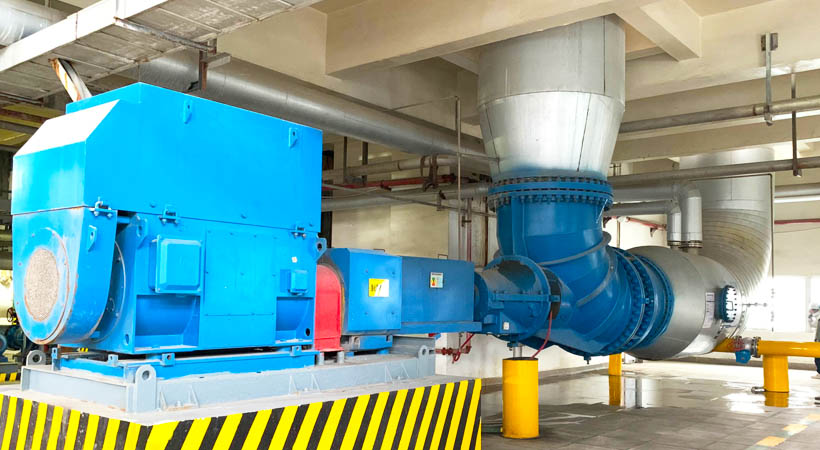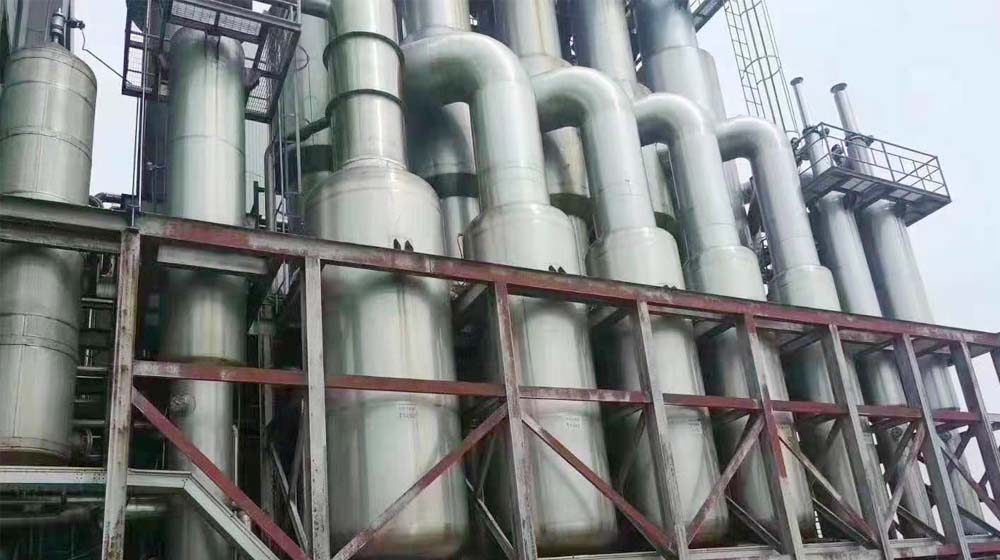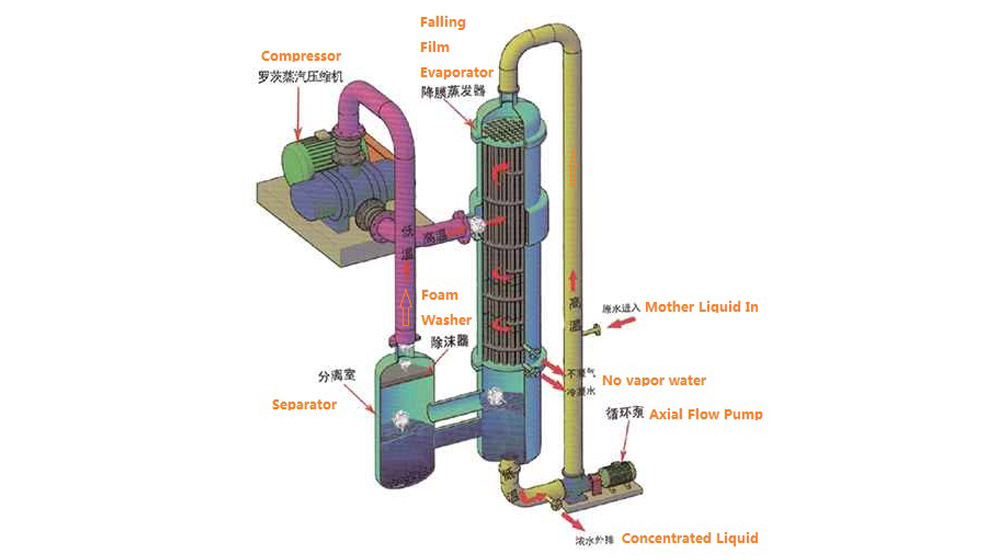Falling Film Evaporators (FFE): A Game-Changer in Industrial Processes
1.Introducing Falling Film Evaporators
In the realm of industrial processing, Falling Film Evaporators (FFEs) stand out as versatile and efficient tools for concentrating liquid solutions. These devices operate on a fascinating principle, where a thin film of the liquid flows down vertically inside a heated tube or plate, allowing for rapid evaporation and concentration.
2.Importance of Falling Film Evaporator Plants
FFEs play a crucial role in various industries, including food and beverage, pharmaceuticals, chemicals, and wastewater treatment. Their ability to handle heat-sensitive materials with minimal fouling and scaling makes them indispensable in modern manufacturing processes.
3.Understanding Falling Film Evaporators
How Falling Film Evaporators Work?
At the heart of FFEs lies the principle of falling film evaporation. As the liquid enters the evaporator, it forms a thin film that cascades down the heat exchange surface. Heat is applied to the exterior of the tubes or plates, causing the liquid film to evaporate, leaving behind a concentrated solution.
Principles of Heat Transfer in Falling Film Evaporators
Heat transfer in FFEs occurs primarily through convection and phase change. The thin film of liquid maximizes the surface area available for evaporation, resulting in efficient heat transfer and high evaporation rates.
4.Components of a Falling Film Evaporator Plant

Evaporation crystallization axial flow pump
- An evaporation crystallization axial flow pump is a specialized type of pump designed to facilitate the process of evaporation and crystallization in industrial applications.
- Evaporation Crystallization Process: In evaporation crystallization, a solution is heated to induce evaporation, leading to the formation of crystals as the solute concentration increases. This process is commonly used in industries such as chemicals, pharmaceuticals, and food processing to separate and purify substances.
- Role of Axial Flow Pump: An axial flow pump is utilized within the evaporation crystallization system to circulate the solution through the process. Unlike centrifugal pumps, which generate radial flow, axial flow pumps create a flow parallel to the shaft axis. This design allows for efficient movement of the solution through the system, promoting effective heat transfer and crystal formation.
Heat Exchange Tubes
The heat exchange tubes are the core components of FFEs, providing the surface area for heat transfer between the heating medium and the liquid.
Distributors and Spargers
Distributors ensure uniform distribution of the liquid onto the heat exchange surface, while spargers facilitate the distribution of vapor within the evaporator.
Vapor Separation Systems
Efficient vapor separation systems are essential for separating the vapor from the liquid concentrate, ensuring high product quality and efficiency.
Feed Systems
Reliable feed systems are crucial for delivering the liquid feed to the evaporator in a controlled manner, optimizing the evaporation process.
5.Design Considerations for Falling Film Evaporator Plants
Sizing and Scaling Factors
Proper sizing and scaling of FFEs are essential to ensure optimal performance and efficiency. Factors such as flow rate, temperature, and concentration must be carefully considered during the design phase.
Material Compatibility
Selecting materials that are compatible with the process fluid is critical to prevent corrosion and contamination, ensuring the longevity and reliability of the evaporator plant.
Energy Efficiency Measures
Implementing energy-efficient designs and operating practices can significantly reduce energy consumption and operational costs, making FFEs a sustainable solution for industrial processes.
6.Applications of Falling Film Evaporator Plants
Food and Beverage Industry
In the food and beverage industry, FFEs are used for concentration and purification of fruit juices, dairy products, and other liquid foods.
Pharmaceutical Industry
In pharmaceutical manufacturing, FFEs are employed for solvent recovery, concentration of active pharmaceutical ingredients (APIs), and purification of drug formulations.
Chemical Industry
In the chemical industry, FFEs are utilized for solvent recovery, concentration of chemical solutions, and purification of specialty chemicals.
Wastewater Treatment Plants
In wastewater treatment plants, FFEs are used for concentration and recovery of valuable compounds from wastewater streams, reducing environmental impact and promoting resource conservation.
7.Advantages of Falling Film Evaporator Plants
High Evaporation Rates
FFE’s unique design allows for high evaporation rates, leading to faster processing times and higher productivity.
Energy Efficiency
The efficient heat transfer mechanism of FFEs results in lower energy consumption compared to other evaporation techniques, making them environmentally friendly and cost-effective.
Minimal Fouling and Scaling
The falling film configuration minimizes fouling and scaling on the heat exchange surface, reducing maintenance requirements and downtime.
Gentle Treatment of Heat-Sensitive Materials
FFE’s gentle evaporation process is ideal for handling heat-sensitive materials, preserving product quality and integrity.
8.Challenges and Limitations
Fouling and Scaling Issues
Despite their advantages, FFEs are susceptible to fouling and scaling, which can affect performance and require regular cleaning and maintenance.
Maintenance Requirements
Maintaining FFEs can be challenging due to their complex design and the need for periodic inspections and cleaning to prevent fouling and corrosion.
Cost Considerations
The initial cost of installing and operating FFEs may be higher compared to other evaporation techniques, requiring careful consideration of investment and operational costs.
Conclusion
With their high evaporation rates, energy efficiency, and gentle treatment of heat-sensitive materials, FFEs continue to play a vital role in modern industrial processes, driving innovation and sustainability in manufacturing.


